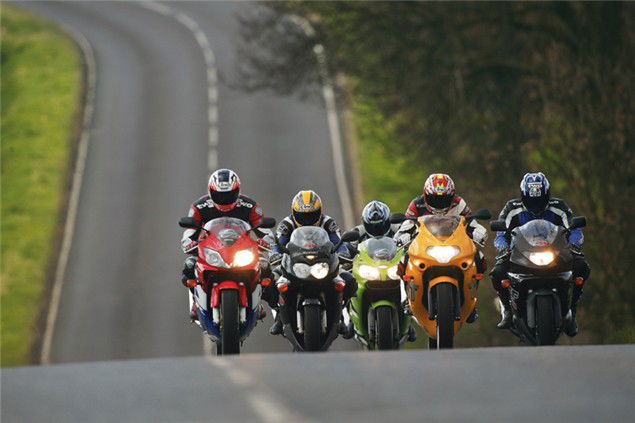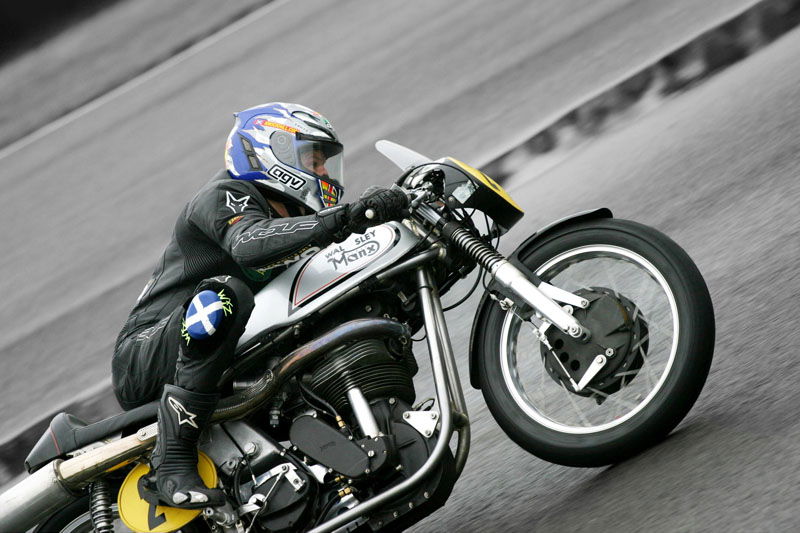Road Test: Real World 600s
If pound notes are more important than lap times these 600s offer the best compromise of race replica handling with real world practicality. New and secondhand these still top the sales podium


What a difference a year makes. Just 12 months ago three of these bikes were the very latest, sharpest tools that their respective
manufacturers could produce. Now they are overshadowed by newer, faster and better looking siblings. The march of progress has developed into a flat out sprint when it comes to the supersport 600s.
Which is great news for the bargain-hunting buyer because as with every race there are always stragglers. I don't mean this in a detrimental way, it's just that in the 600cc class things are progressing so fast that some truly fantastic bikes are now considered, well...old hat. Which means that both brand new and second-hand these five bikes offer tremendous value for money.
Take the CBR600 F1 for example. Just two years ago it was launched alongside its Sport brother. Virtually identical bar some very minor engine parts the F1 was intended as the all-round CBR. Or in other words you got a centre stand, single pillion and rider seat and slightly subtler graphics. Big deal. But because it had the image of being the 'soft option' riders snapped up the Sport and largely forgot about the F1. Put the two of them together on a track and they are inseparable but ask a pillion which they prefer, or try and adjust and lube the chain, and the differences show. Now the Sport has been dropped from Honda's range in favour of the RR the differences are even more profound. Pillion on the RR? No thanks. Luggage carrying? Not really. And the seat's padding means comfort is measured in laps rather than miles. Which is why the F-1 has been kept in the range. Die-hard sports bike fans will consider it second-rate to the single-minded RR, but for real world riding it has its fans.
It's a similar story for the 2002 ZX-6R. Despite it being the most road-biased of the Japanese 600s (with the exception of the CBR) it can still cut it on the track and Niall Mackenzie rated it second behind the GSX-R in last year's group test. However that was before the 2003 bike was launched. Now the Kawasaki looks decidedly old fashioned. No radial brakes? Conventional forks? Carbs? With the drawing back of a curtain to reveal the 2003 ZX-6R the 2002 bike instantly became an all rounder. But dealers still have plenty of brand new 2002 bikes in stock, and like the CBR F1 secondhand examples are starting to appear.
However where the CBR and ZX-6R have been demoted to the status of real world by sharper siblings the Thundercat and GSX have little in common with their sportier brothers. The Yamaha has remained virtually unchanged since it was replaced by the R6 way back in 1999 and the good old GSX is one of those bikes that seems to keep getting churned out year on year and goes unnoticed by nearly everyone except those who actually buy them. Both can still be bought brand new but most of their sales are secondhand as owners upgrade to newer or sportier bikes.
And as for the TT600? Well the new Daytona 600 has now firmly established itself as the British firm's rival to the best Japan can offer, which has taken the pressure off the TT600. When it was launched, the TT was heralded as the new Japanese beater, it wasn't. What the TT600 is a good handling all-round 600 with a British name on the tank and now the Daytona is on the scene prices of new bikes, another stumbling block for Triumph as riders were unwilling to pay a premium just for a British bike, are dropping and secondhand bikes are appearing for those want to save cash.
So there you have it, five real world 600s that can all be bought brand new or secondhand. Yes we all would love to own the very latest model, but with price tags in the region of seven big ones for the latest all-singing all-dancing bike the secondhand market is currently booming. So that's were we delved to find these bikes. We spent a week ringing around dealers trying to get together these five bikes together in one place for us to ride, and the problems we had getting them gives a very good indication of which are the big sellers, but are the big sellers also the best machines?

